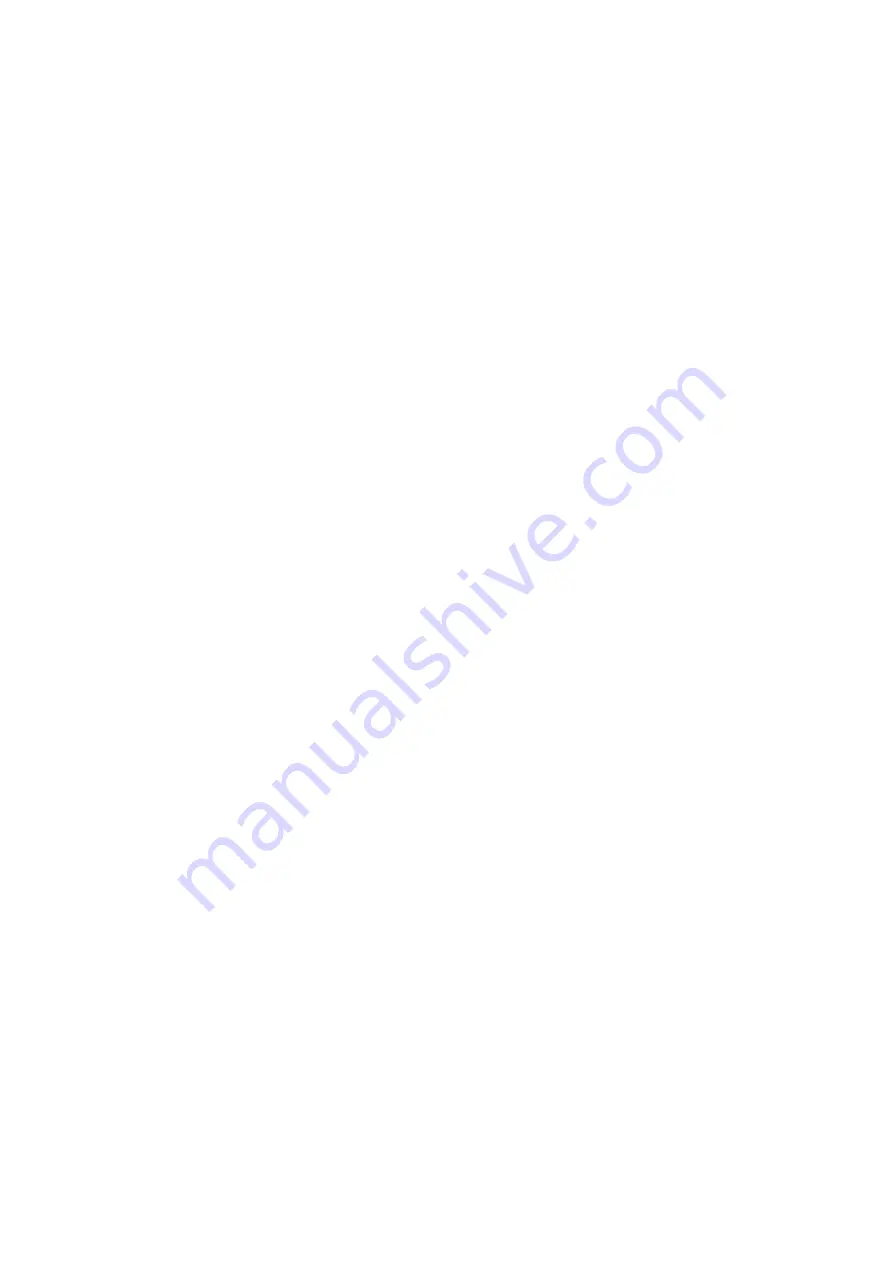
Use only hardened steel hose fittings (or same strength other fittings) for impact, impulse or vibrating tools.
Accessories
Only use accessories and consumables that are designed for the use with this tool.
Select the best available inserted/mounted accessories/consumables for the lowest possible noise level and vibration. Replace them in
case of an increased noise level and/or vibration.
Make sure that the inserted/mounted abrasive is inserted/mounted correct and clamped.
After inserting/mounting an abrasive, let the tool run at no load in a safe direction for one minute, stop immediate at not normal
vibrations/noise and correct this or replace the abrasive.
Select the correct abrasive dimensions, rpm and spindle fitting for this tool.
Inspect the abrasive product on damages, cracks or other defects before mounting it on the tool.
Spindle fitting of the abrasive must be correct, do not use any kind of adaptor to fit the abrasive.
Flanges for mounting the abrasives must be in good condition without cracks and spindle and spindle threads are not damaged.
Use the inserted/mounted accessory/tool according to the manufacturer specifications.
Using the tool:
Before start using the tool, make sure that you are familiar with the workplace and surrounding area.
Always obey the safety regulations for the work area you are working in.
The angle/vertigal/straight grinder is only to be used for grinding/polishing and cutting various materials like steel/aluminum/plastics
etc with the appropriate accessories available on the market. These accessories must be suitable for the use on an angle grinder as
stated by it’s manufacturer.
Hold the tool always firmly with both hands.
Start the tool by unlocking the safety lever and pushing the main lever.
Apply sufficient force, never supply too much force as this will slow down the efficiency. Maximum efficiency during operation: 80 % of
the free rpm.
Too much force may stop the tool.
During operating the tool, the operator may be exposed to hazards as crushing, impacts, heat, vibration, cuts, abrasions, etc: Wear
suitable gloves.
Any person handling the tool must be able to handle the size, weight and power of the tool.
Always be prepared for normal/abnormal movements/forces generated by the tool.
Keep your body in balance, place your feet safe and secure.
In case of interruption of the air supply, release the lever/trigger.
Take care of the reaction forces, if the tool (suddenly) stalls.
When using a power tool, you may experience discomfort in your hands, arms, shoulders, neck and other parts of your body.
If you experience symptoms such as persistent or recurring discomfort, pain, throbbing, aching, tingling, numbness, burning sensation,
or stiffness: Do not ignore these warning signs. Stop using the tool, tell your employer and consult a qualified health professional.
At cutting operations, make sure that the cut pieces can not fall, causing danger or injuries.
Push the lever to start the tool and release the lever to stop the tool.
Operator should change posture regularly to avoid discomfort and fatigue.
Use hear protection according to employer, health and safety regulations.
Maintenance:
Check the tool regularly for loose bolts/screws or parts.
Measure the rpm of the tool regularly, in case of higher or lower rpm than indicated in the technical specifications: Stop using the tool
immediate and have it repaired.
Check the safety guard regularly on damages or cracks, if yes: stop using the tool and have it repaired.
In case of power loss: Have the tool repaired.
Only trained and qualified engineers are allowed to adjust or repair the tool.
In case the tool is equipped with a silencer, make sure that this silencer is working properly, a damaged silencer has to be replaced.
In case of disposal of the tool, follow local regulations, so as much as possible can be recycled. Do not throw it in the normal waste bin.
The tool should be maintained regularly to minimize the noise emission and occurring vibration.
Disconnect the air supply during maintenance on the tool.
Maintain the tool at least yearly.
Intended use:
The user or the user's employer shall assess the specific use that can be present as a result of each use.
Never use the tool otherwise than the tool is designed for and as explained in this manual.
Damages as a consequence of not following this manual, or caused by incorrect use or incorrect repairs, will never be covered by our
warranty and we will have no responsibility for it. We reserve the right for technical improvements, without prior notification.
This tool is designed for grinding, polishing processes using the appropriate accessories as explained in this manual. If used otherwise
a risk assessment has to be made by the employer/user.
Summary of Contents for RRI-6150-2CV
Page 1: ...RRI 6150 2CV MANUAL EN www rami yokota com...
Page 2: ......
Page 7: ...www rami yokota com...

























